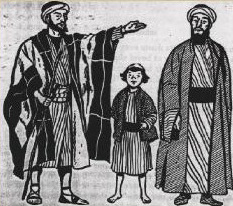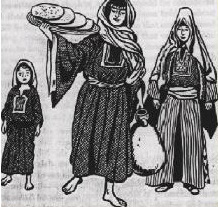 |
|||||||||||||
|
The Birth of Christianity Review "The Birth of Christianity" "By the time that Jesus is said to have lived, patriarchal Judaism was not only stifling but had failed completely in its promise. The lands of the Jews were occupied by idolaters; their Jahweh publicly mocked and completely ineffectual. The last resort of a cleric who is unable to deliver the promises he has made in the name of his god is to denounce the people for their lack of piety. Women and the rural poor especially felt the opprobrium of a fanatical priesthood, as they were blamed for causing Jahweh to turn away from his people and allow the occupation of their land by infidels." ~ From Why Men Made God, page 197. In On the Historicity of Jesus: Why We Might Have Reason for Doubt (2014), Richard Carrier says. "The assumption that Jesus existed as a historical person has occasionally been questioned in the course of the last hundred years or so, but any doubts that have been raised have usually been put to rest in favor of imagining a blend of the historical, the mythical and the theological in the surviving records of Jesus. Carrier re-examines the whole question and finds compelling reasons to suspect the more daring assumption is correct. He lays out extensive research on the evidence for Jesus and the origins of Christianity and poses the key questions that must now be answered if the historicity of Jesus is to survive as a dominant paradigm." In Jesus of Nazareth: " The Controversy & Criticism on The Historicity of Jesus "(2016), edited by Peter J. King, we read: "Most scholars of antiquity agree that there was an individual named Jesus. What also becomes apparent is that much of the philosophy, dogma and supernatural teachings of Christianity can be traced to much earlier religions and that the Jews of the time borrowed or adopted these pre-Christian cultural and religious myths as their own. The Jews actually worshiped several pagan gods in their history. Many scholars that specialize in the hermeneutics of the New Testament agree that due to numerous flawed interpretations of The New Testament, that was written in Konoi Greek and Aramaic were mistranslated." "Bride Price was the practice in pre-literate societies whereby the groom was expected to pay an amount sufficient to compensate the bride’s family for the loss of labor when she moved to her husband’s home. This may have been the motivation behind Laban’s demand in Genesis 29 that Jacob work two consecutive seven-year terms in order to earn the right to marry Leah and Rachel. In Exodus 22:16-17 we read that a man who lies with an unbetrothed virgin must pay the marriage present and marry her. In Deuteronomy 22: 28-29, we learn that a man who rapes an unbetrothed virgin must pay 50 shekels to her father and marry her. (A raped woman was considered unmarriageable: a forced marriage to her rapist was thought to be better than no marriage at all.) These references would appear to suggest the existence of a system where men purchased their wives and had to pay real money, but fifty shekels was a reasonable wage for a worker for five years and would be well beyond the resources of the average suitor. Such a sum might be compensation for an act of rape but could hardly be, as some have suggested, the normal price for a bride." ~ From "Women and the Law in Ancient Israel", a sub-section of "Women in the Ancient World - the status role and daily life of women in the ancient civilizations of Egypt, Rome, Athens, Israwl and Babylonia", 2010, by James C. Thompson B.A., M.Ed.   "There are many different sections of the Ancient Hebrew dress. Some of these parts are the Inner Garment (also known as the tunic or shirt), the Outer Tunic or Robe, the Girdle, the Outer Garment or Mantle, and the Headdress... ...The outer garment (kesut) also covered one while sleeping and was the final and most important part of one's wardrobe. The male and female version of the outer garment were also similar but were different in style. There were also different types of outer garments. For example, women wore special outwear when they were widowed. All outer garments went to right above the ankles and had a hood (women) or ended at the middle of the calf (man)." ~ from an article by Heather Breining found on the Ancient Hebrew Research Centre website. |
| Copyright © Redefining the Sacred. All rights reserved. | |